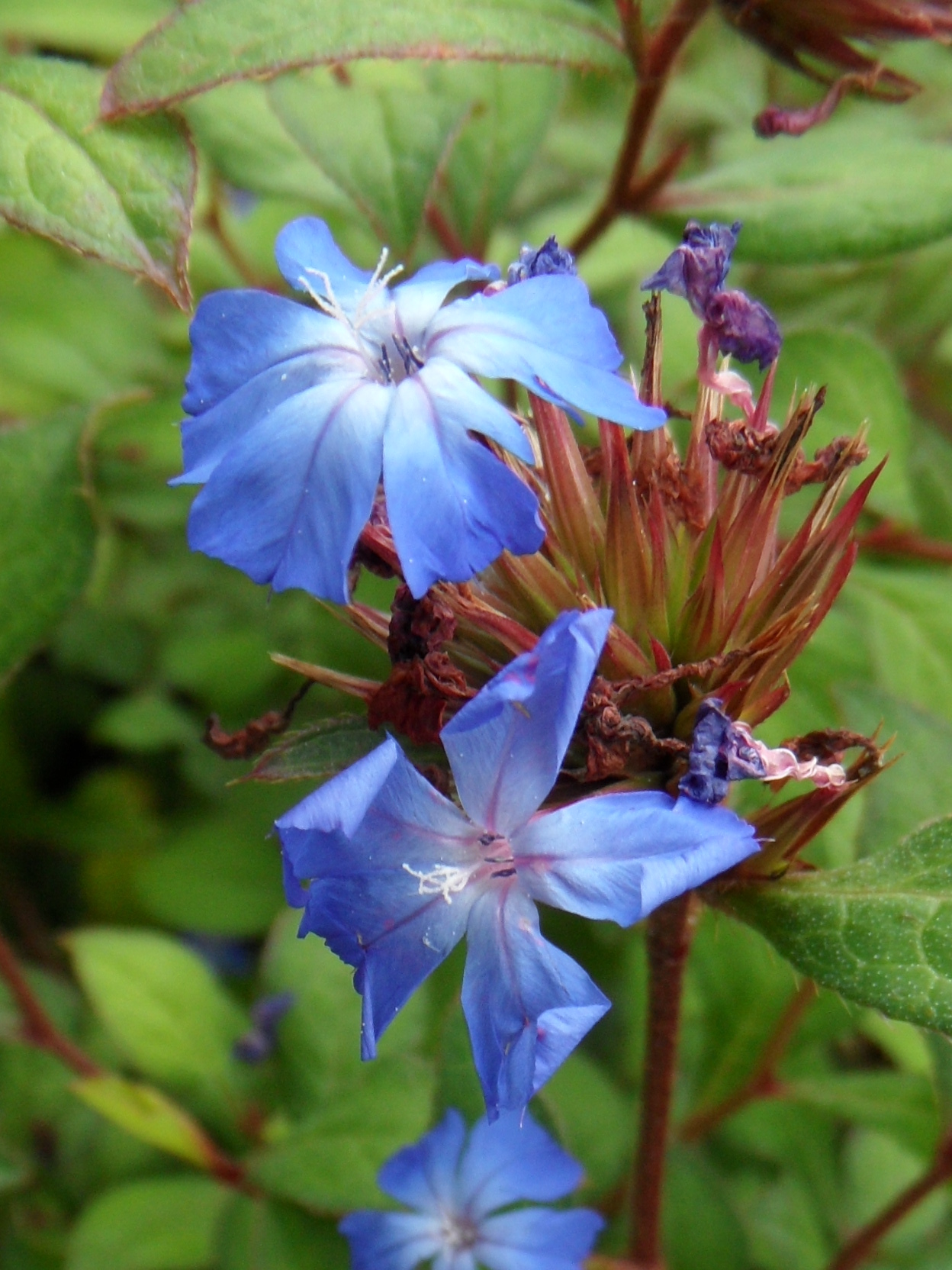
Greek keras—horn, in reference to the horned stigma.
Perennial herbs with woody bases or occasionally shrubs. Leaves alternate with whiskered edges. Flowers in dense terminal or axillary one-sided clusters with reddish brown bracts at the base. Sepals 5, fused to form a tube, 10-nerved at the base and without glandular hairs. Petals fused at the base into a slender tube with 5 spreading lobes, usually blue. Stamens joined to the middle of the floral tube. Fruit a capsule splitting into 5 valves.
C. griffithii C.B. Clarke is sometimes available (see key for character distinctions).
Stamens attached to the petals; sepals without glandular hairs.
About 8 species from Himalaya, China and Africa (Ethiopia, Somaliland).
Lawrence (1954).
Source: (1997). Plumbaginaceae. In: . Horticultural Flora of South-eastern Australia. Volume 2. Flowering plants. Dicotyledons. Part 1. The identification of garden and cultivated plants. University of New South Wales Press.
